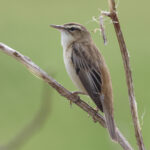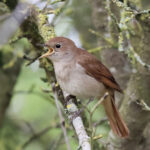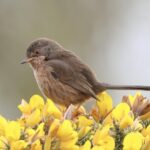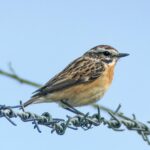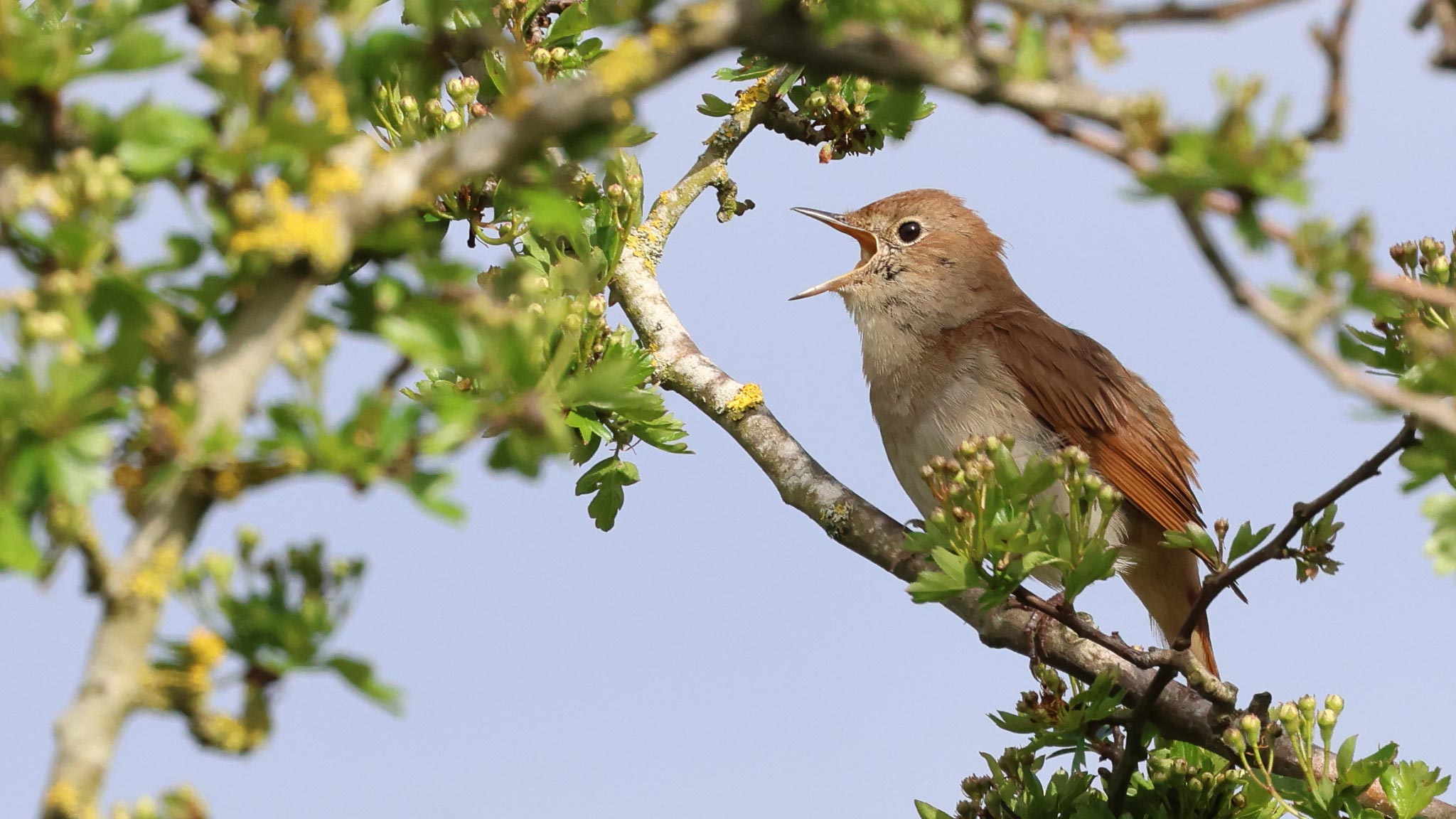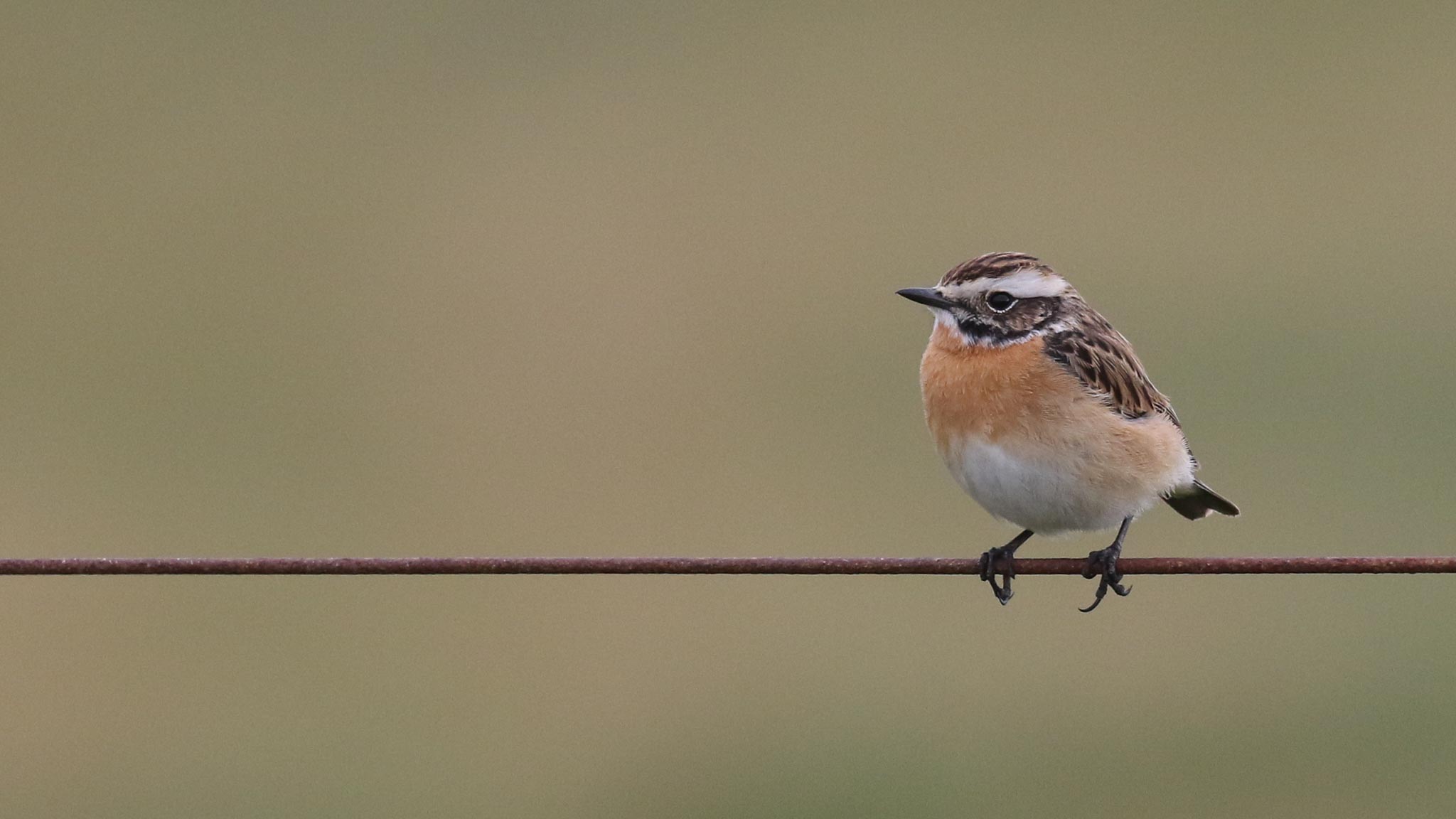Day 1 of a 2-day Spring Tour in North Norfolk today. It was a lovely bright and sunny day, but chilly in the blustery NE wind, coming in off the cold North Sea, and warm out of it.
Our first destination for the morning was Cley. We parked below Walsey Hills and as we got out of the minibus we could hear Little Grebes laughing maniacally from Snipe’s Marsh and Little Egrets bubbling in the wood beyond. A Lesser Black-backed Gull flew over the road and out across the grazing marsh.
It was windy up on the East Bank. Our first Spoonbill of the day appeared over the trees briefly but disappeared back in, whereas a couple of Little Egrets flew out. A Grey Heron flew in over the reeds. A Reed Warbler was singing still from somewhere deep in the reeds, but the Sedge Warblers here seemed to have gone quiet this morning. The chill in the wind was probably not helping. Three Lapwings were displaying out over the grazing marshes.
A male Marsh Harrier flew in over the reedbed carrying something in its talons. We watched and waited for the female to circle up but she barely got above the height of the reeds before the male dropped the food to her. The same thing happened again later – presumably they were keeping down lower today due to the wind.
Further on, we stopped to listen to a Cetti’s Warbler shouting from the reeds just across the ditch below the bank. It flicked along into a nearby sallow, where it perched briefly deep in the branches. We could hear Bearded Tits pinging, and despite the wind had several flight views of them zipping back and forth over the tops of the reeds. Further up, a Sedge Warbler was singing now and we had nice views of it perched in the top of a small elder, swaying around in the breeze. Two or three Reed Buntings flew in and out of the reeds too.
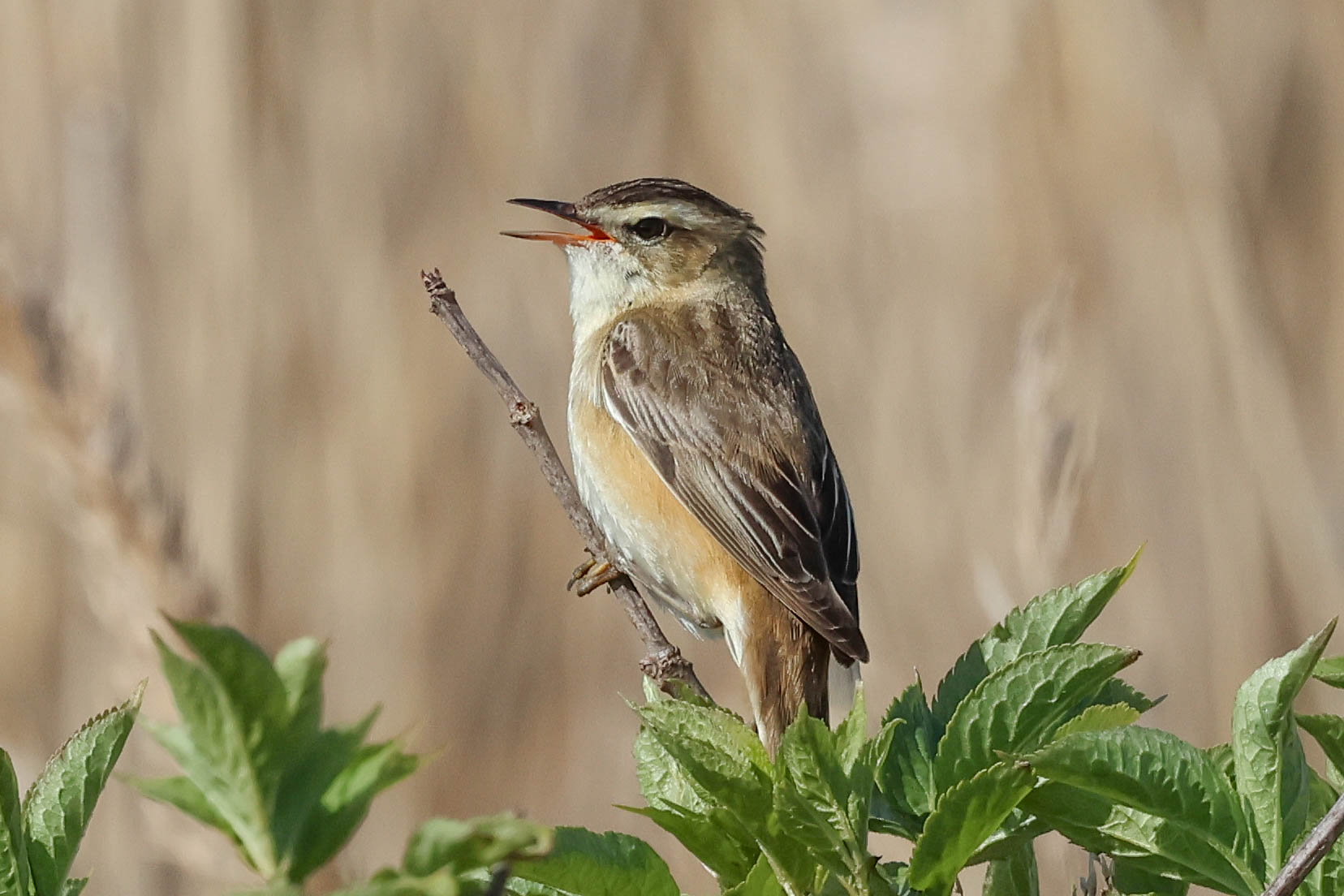
There are fewer ducks on the grazing marsh now, as birds have departed north and east for the breeding season. We did find a few Shoveler and Teal still around the edges of the Serpentine. An Egyptian Goose flew in over the reedbed, showing off its big white wing patches.
There were several Black-tailed Godwits and Avocets on the Serpentine. We got the scope on a male Ruff feeding on the mud on the edge of the water, a rather dark male already well advanced in its moult to breeding body plumage, even if too early for it to be starting to get its ornate ruff yet. A Little Ringed Plover flew in displaying and landed briefly on the mud, before flying off towards Arnold’s Marsh.
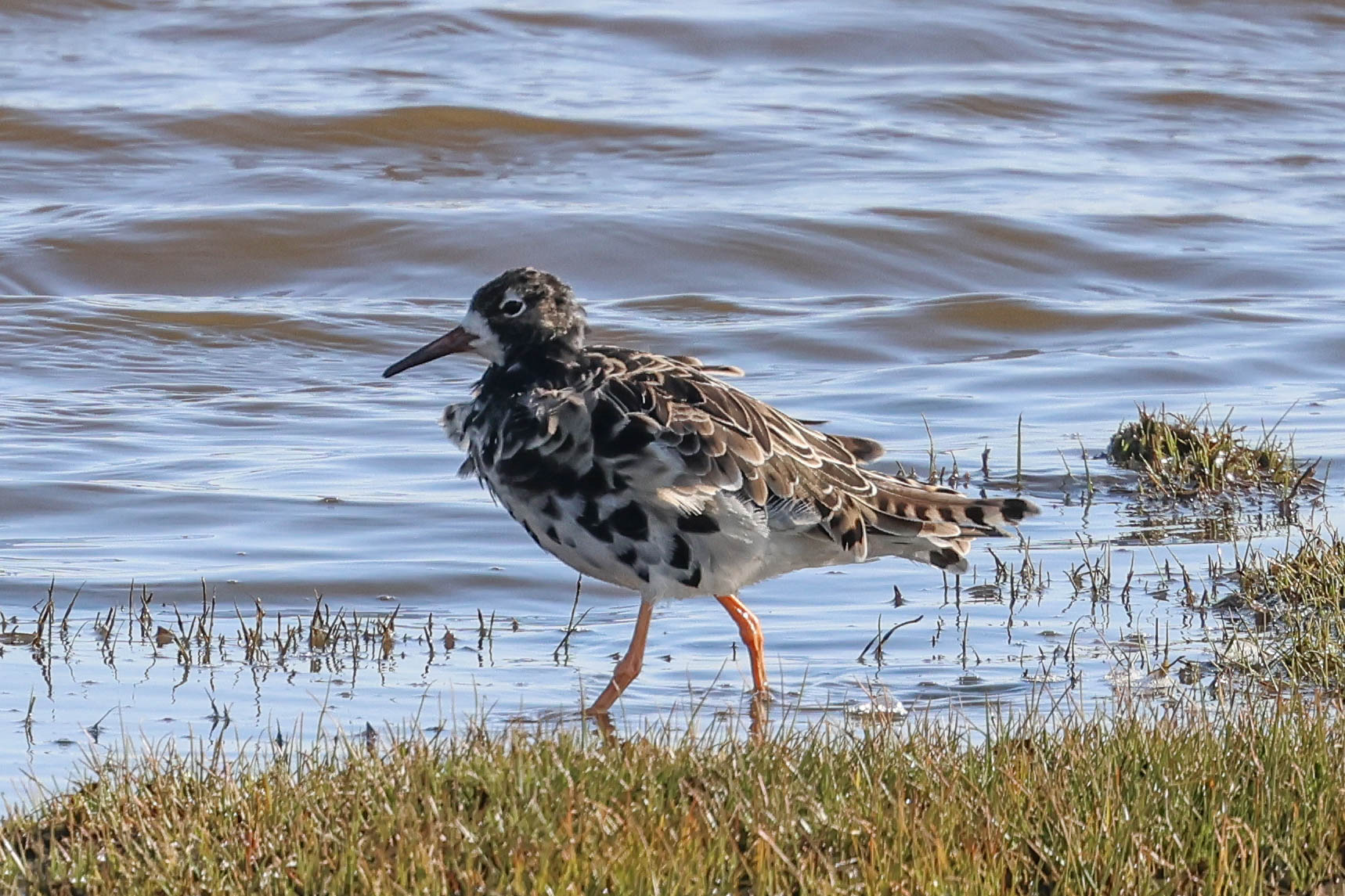
We continued on over the main drain and got out of the wind in the lee of the shelter. Scanning the brackish pools, several Pintail were upending, the drakes showing off their long pin-shaped tails. A Turnstone was feeding on the muddy edge at the back, along with a couple of Ringed Plovers, and another Ringed Plover appeared much closer along the far edge. A Whimbrel flew over the path and away west over the reedbed.
There were two Mediterranean Gulls on one of the small islands on the brackish pools, both 2nd summers with jet black hoods and black spots in the their wingtips. A male Marsh Harrier drifted over from the reedbed at one point causing all the gulls to scatter, but it wasn’t long before they were all back again.
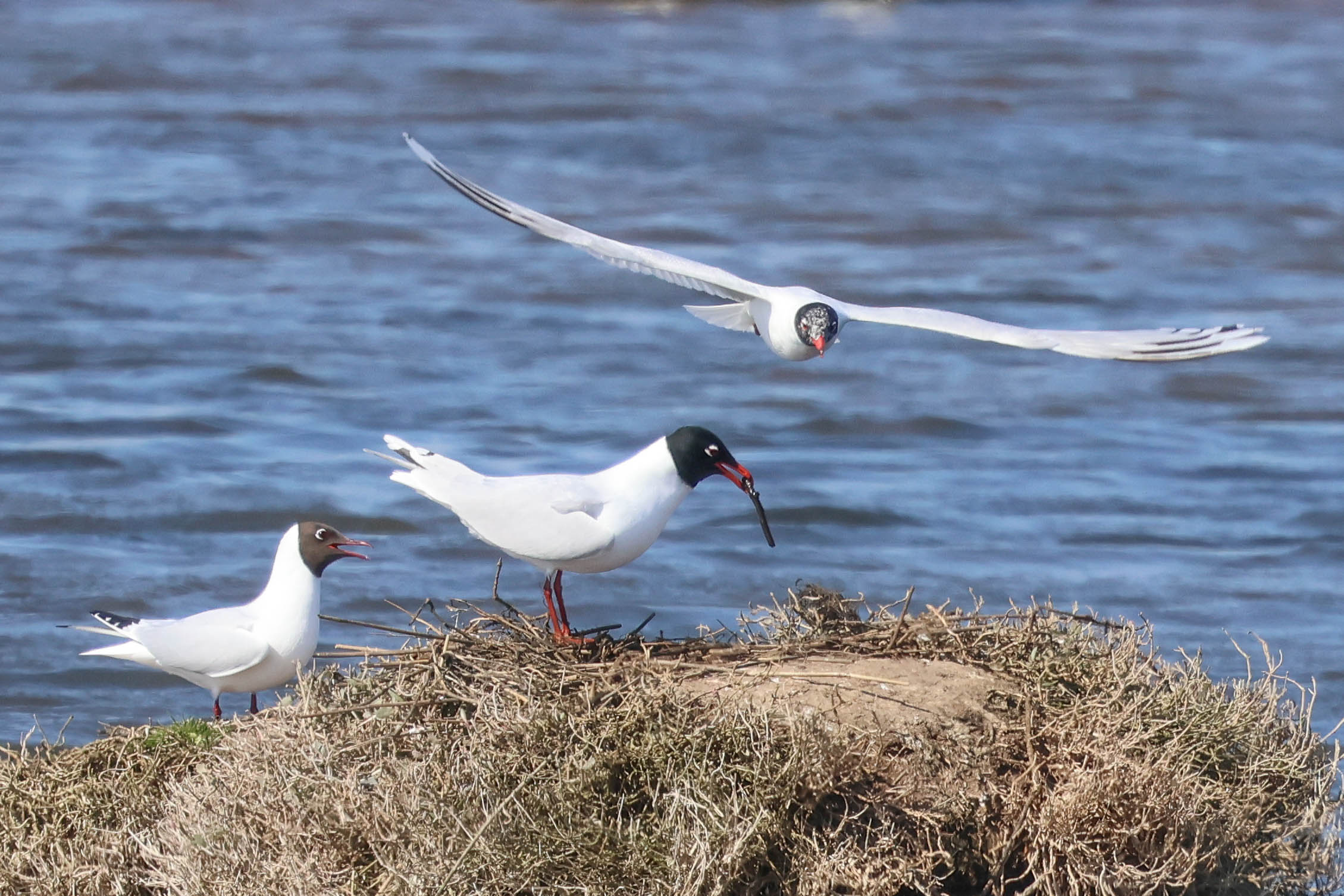
A large flock of Curlew flew in over the brackish pools and over the path, landing further back on Arnold’s Marsh. We got the scope on them, and then looked through the rest of the waders out there. There were lots of Redshank and Dunlin, but we couldn’t see anything else in with them this morning. A couple of Linnets were feeding down on the saltmarsh at the front.
We decided to brace the beach. Setting off again, we paused to admire a Meadow Pipit which landed in the alexanders on the edge of the path ahead of us. A pair of Teal dropped in onto the smaller pools just below the bank, the drake looking particularly smart now in the sunshine.
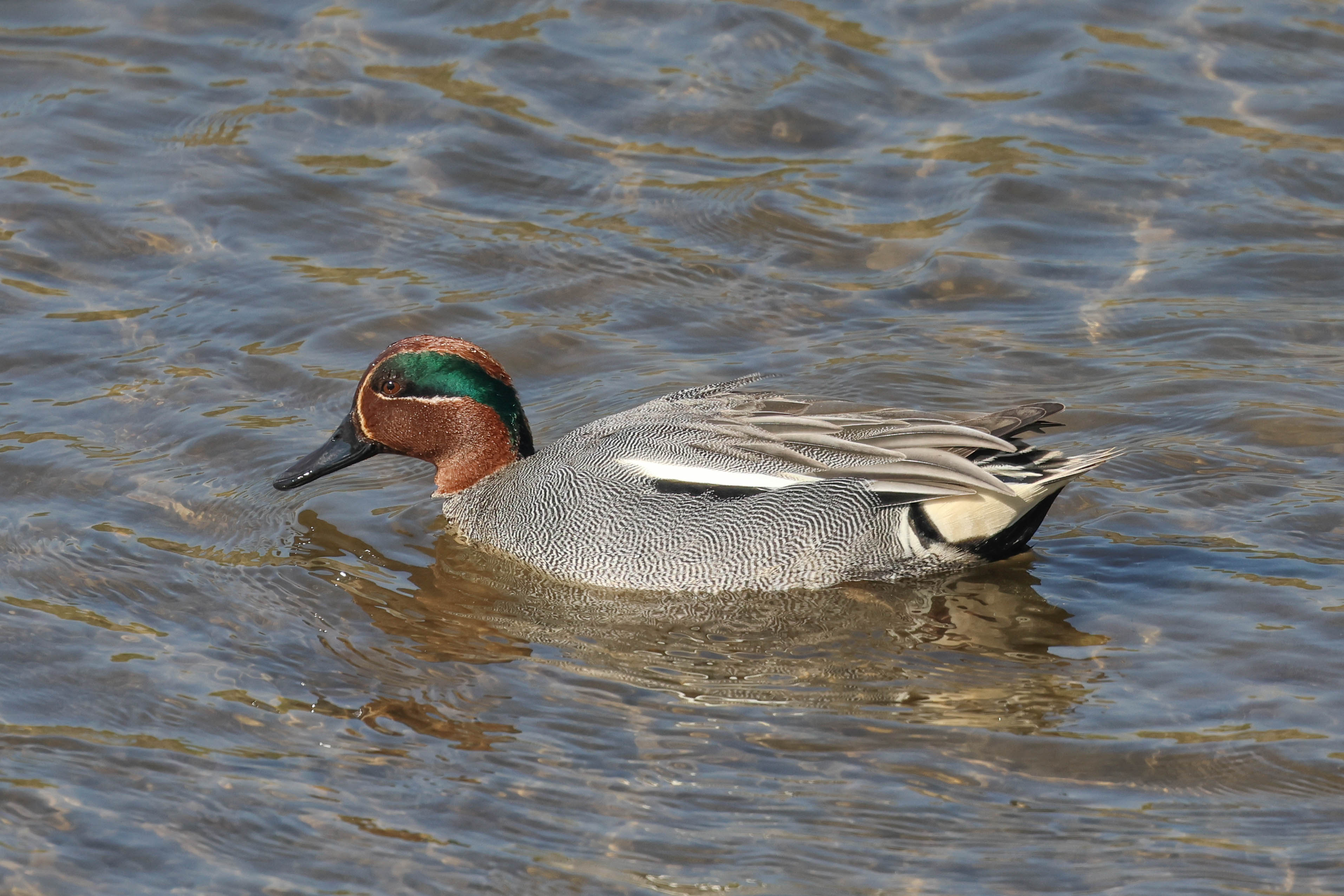
We had a quick look out at the sea but there was nothing moving offshore today. It was very exposed out here, so we didn’t linger today and turned to head back. A Curlew was now feeding right below the path on the edge of the brackish pools.
Back past the reedbed and we saw more Bearded Tits zipping back and forth over the reeds. A Common Buzzard hung in the air over the fields behind North Foreland plantation. Back to Don’s Pool, a Coot swam across with its bill full of nest material. We had great views of a Little Grebe which was diving in the water just below us. A Spoonbill flew out of the trees, and we watched it disappear off over the hides and drop down into the Glaven channel beyond the West Bank.
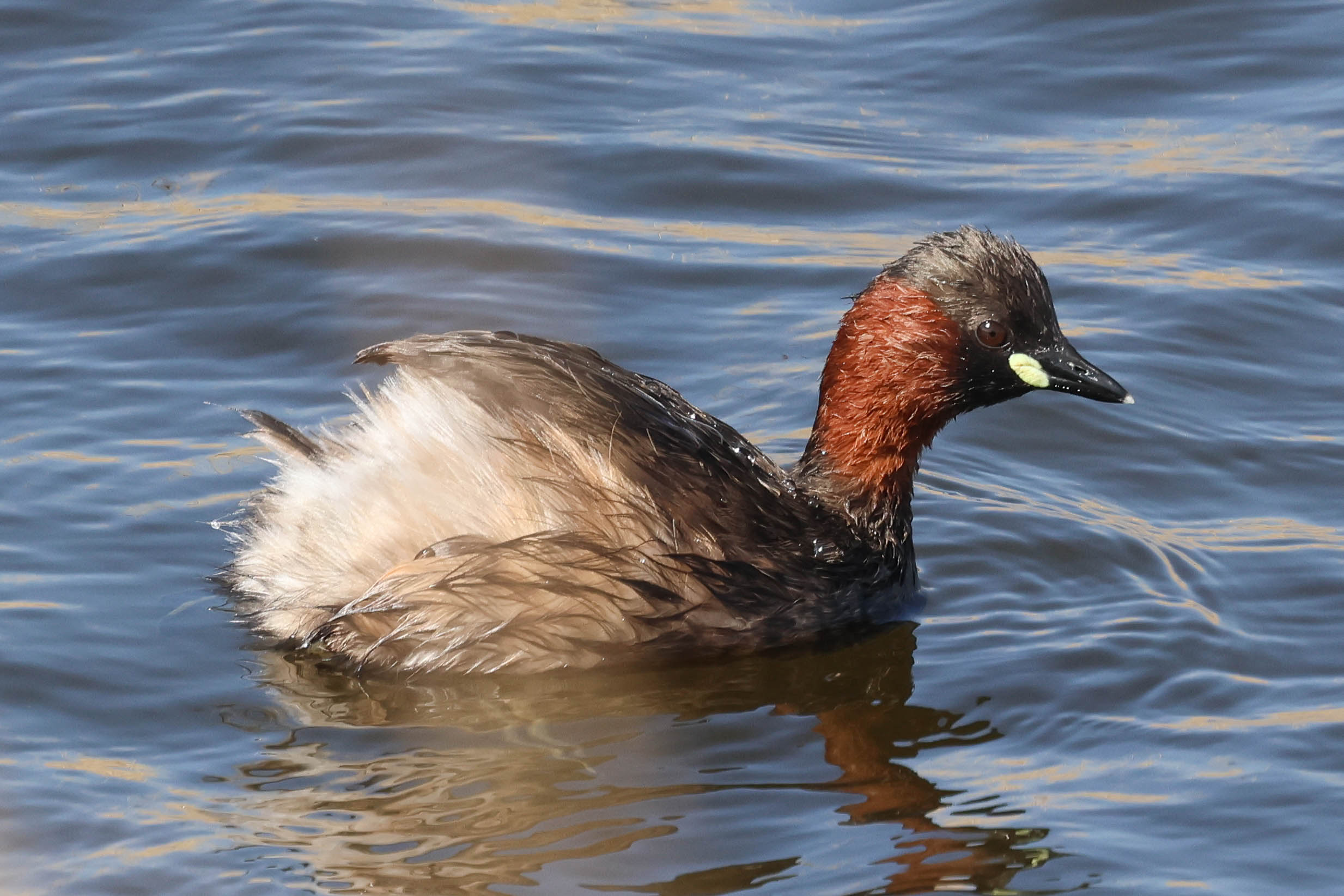
Looked across the road from below Walsey Hills, we could see lots of young Great Black-backed Gulls now on Pope’s Pool. A Bar-tailed Godwit came up from the grazing marsh and we watched it flying away, dropping down towards Arnold’s Marsh. We drove round to the Visitor Centre to use the facilities quickly, then continued on to Morston.
We parked in the National Trust car park down by the harbour and walked up onto the seawall. There were several Oystercatchers and Redshank in the harbour channel but we couldn’t see any sign of the Whimbrel which has been lingering here. A small group of Brent Geese were bathing in the water and there were lots more on the saltmarsh beyond. As we walked east along the path, a Chinese Water Deer was feeding out on the saltmarsh too.
By the paddocks, a quick scan across the grass revealed the Ring Ouzel half way down the field over by the fence. When it turned, we could see its distinctive white gorget. Stopping off on its way to its Scandinavian breeding grounds from North Africa, where it probably spent the winter in the Atlas Mountains, this one has been here for a couple of days now. A nice spring migrant to catch up with here.
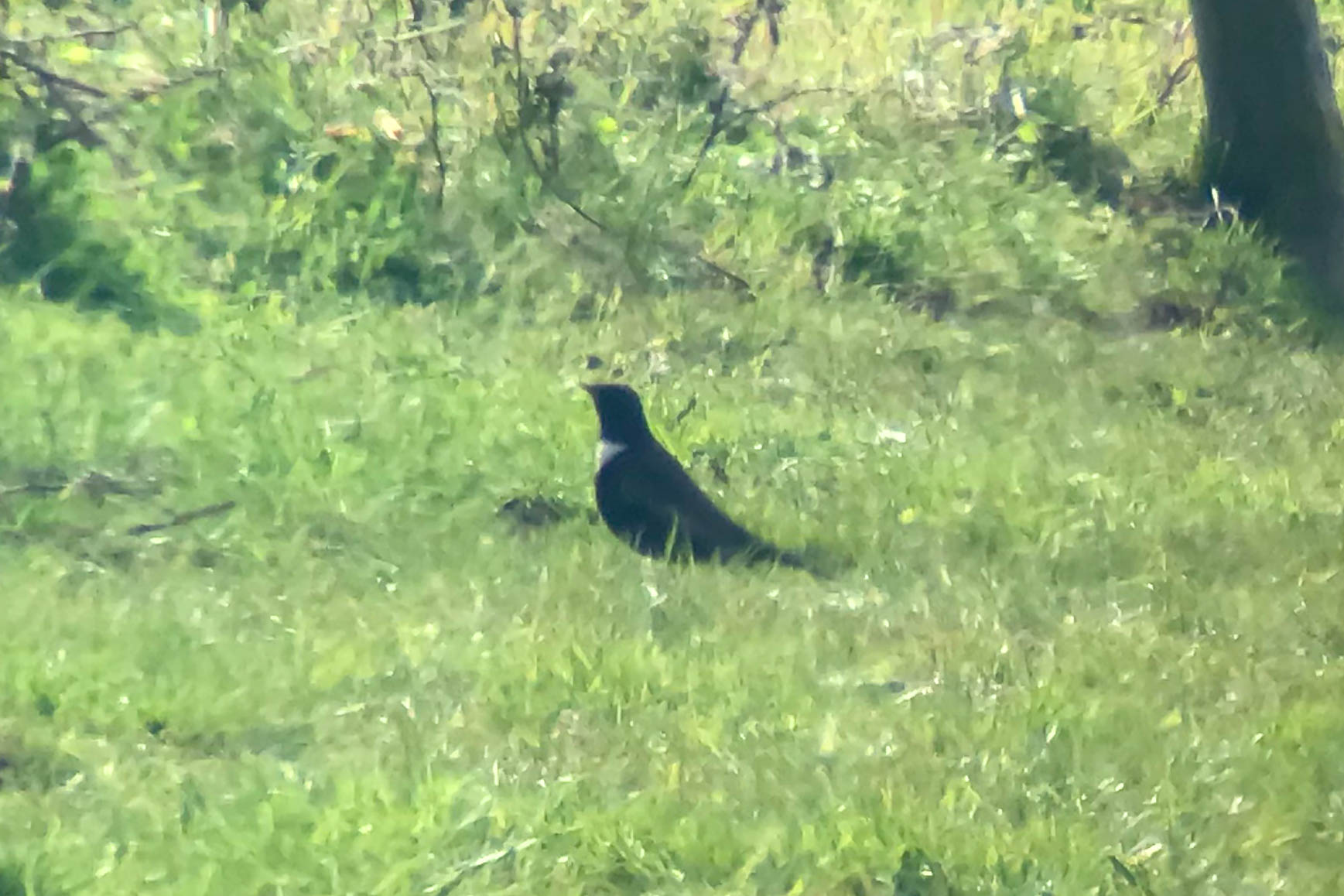
Once we had all had a good look at the Ring Ouzel, we turned to walk back and immediately spotted the Whimbrel in the channel, between the boats. We had nice views of it through the scope, preening, and then feeding on the muddy bank just behind. Smaller than a Curlew and with a shorter bill, we admired its humbug-striped head pattern.
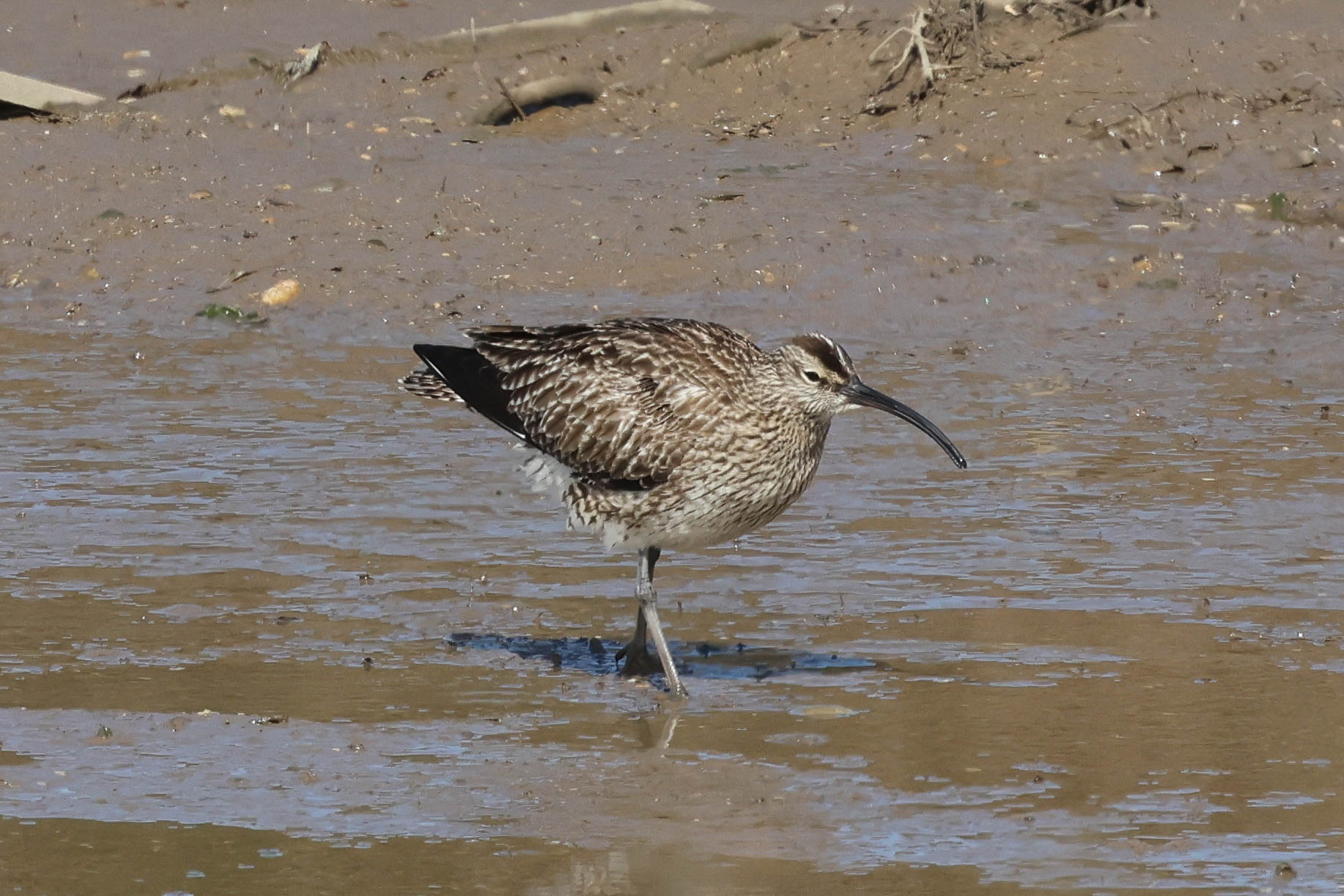
Back at the car park, a Red Kite drifted over and out across the saltmarsh, flushing all the Brent Geese from the harbour. It was lunch time now, so we decided to make use of the picnic tables here today. A Lesser Whitethroat was singing in the hedge beyond, our first of the year, and a Greenfinch flew round over the toilet block, singing and displaying. Four Swallows appeared, swooping round over the kiosk and the harbour channel several times, before disappearing off over the field behind the hedge. Some spring migrants were still on the move, despite the cold wind.
After lunch, we drove back to Cley and called in at the Visitor Centre to get permits for the reserve. As we walked down the boardwalk towards the hides, we could hear more Bearded Tits calling in reeds, but despite a quick scan from the gate they were clearly keeping their heads down this afternoon. We could see a Spoonbill asleep on Whitwell Scrape, so we headed in to Avocet Hide first. It was only a short walk along the boardwalk through the reeds but by the time we got there, it had flown off. Very annoying of it!
Round to Daukes Hide, the Long-billed Dowitcher was asleep in the grass on one of the islands with the Black-tailed Godwits when we arrived, although we could see the new orange-striped feathers in its upperparts. Suddenly everything spooked and the waders flew round, half the godwits landing in the water in the middle, but the other half flew up to the far end of the scrape, the Long-billed Dowitcher with them. It disappeared behind the island, but started feeding and eventually worked its way further back and out into view again. Now we could watch its distinctive feeding action, rapid bursts of probing into the mud. It has been here for six months now and it will be interesting to see if it leaves us to head north in spring.
A single Bar-tailed Godwit was feeding out in the water in the middle with some of the Black-tailed Godwits. A smart adult male in breeding plumage, the rusty colour of its underparts extended right down under its tail. A Little Ringed Plover appeared on the mud over in the far corner, and we could see its golden yellow eye ring in the scope. A small flock of Dunlin was on here too and kept flying round, jumpy in the wind. We picked up a Common Snipe on the bank on the edge of Whitwell Scrape before it disappeared back into the reeds and we could just see its head.

A pair of Gadwall were feeding in the channel right in front of the hide, and we had a great view of their intricate plumage details. A small group of Common Gulls were sheltering on the water in the lee of the reeds at the back.
Two Spoonbills flew in and landed at the back of Pat’s Pool so we walked round to Teal Hide for a closer look. One was still awake when we got in, preening. We could see its nuchal crest blowing in the wind, and the yellow tip to its black spoon-shaped bill. Then it walked over to join the other Spoonbill and went to sleep too.
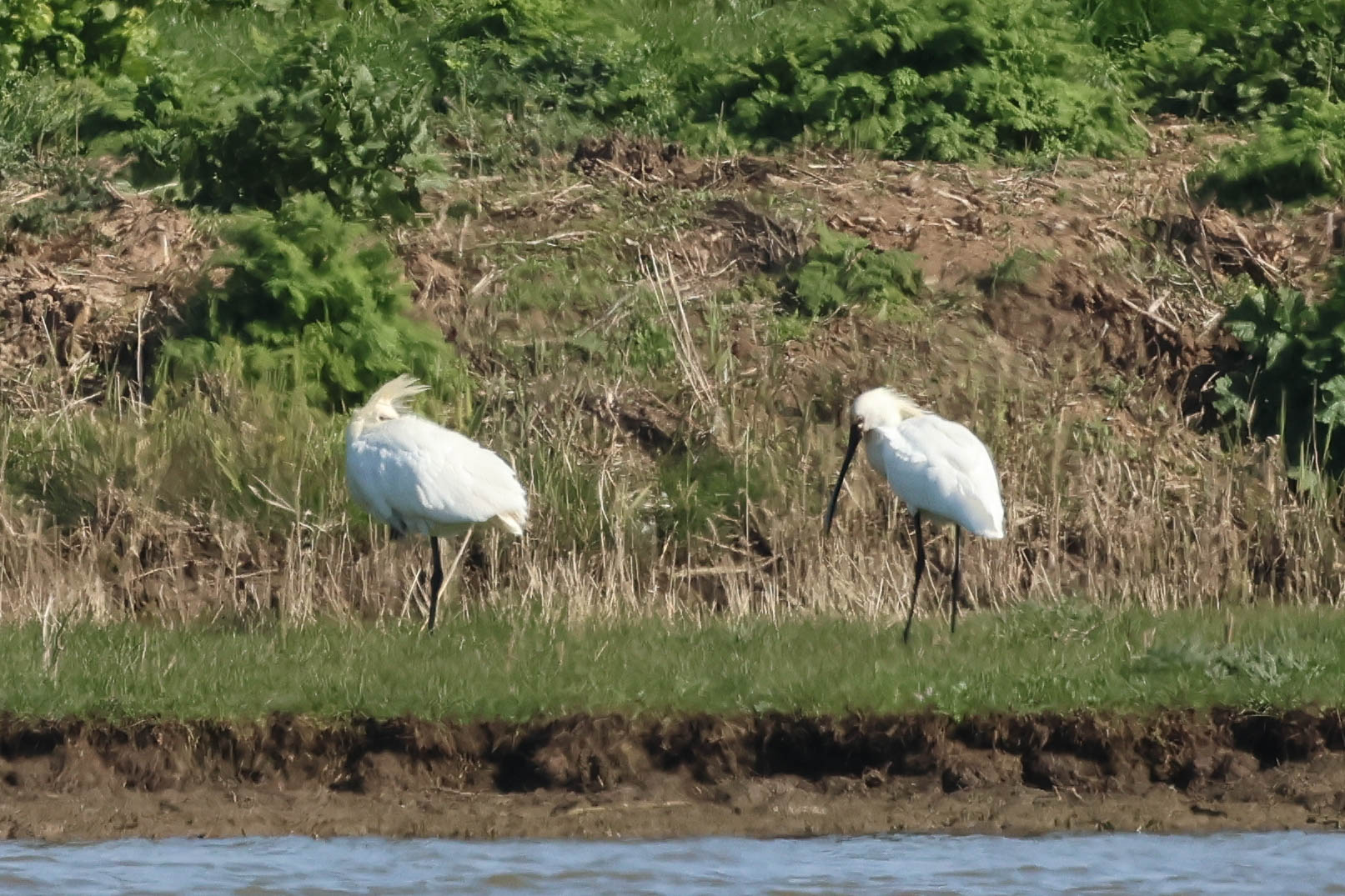
A Lapwing was on the bank right in front of hide, and looked stunning in the sunshine, its metallic green upperparts with highlights of purple and bronze on the shoulder. There were several more Ruff on the islands, in various different colours and stages of moult. The most confusing wader! A Redshank was feeding along the front edge, much plainer grey upperparts by comparison.

A pair of Wigeon were on the mud bank along the edge, the only ones we had seen today. The others which spent the winter have departed already for their breeding grounds in Scandinavia or Russia. There were lots of Sand Martins and a couple of Swallows now hawking out over the water.
There were a few large gulls on the islands but when another flew in and landed in the middle of the scrape, it immediately caught our eye. With a persil-white head and small eye, streaked collar, and very pale mantle with restricted black markings, it stood out – a 1st summer Caspian Gull. A nice bonus.
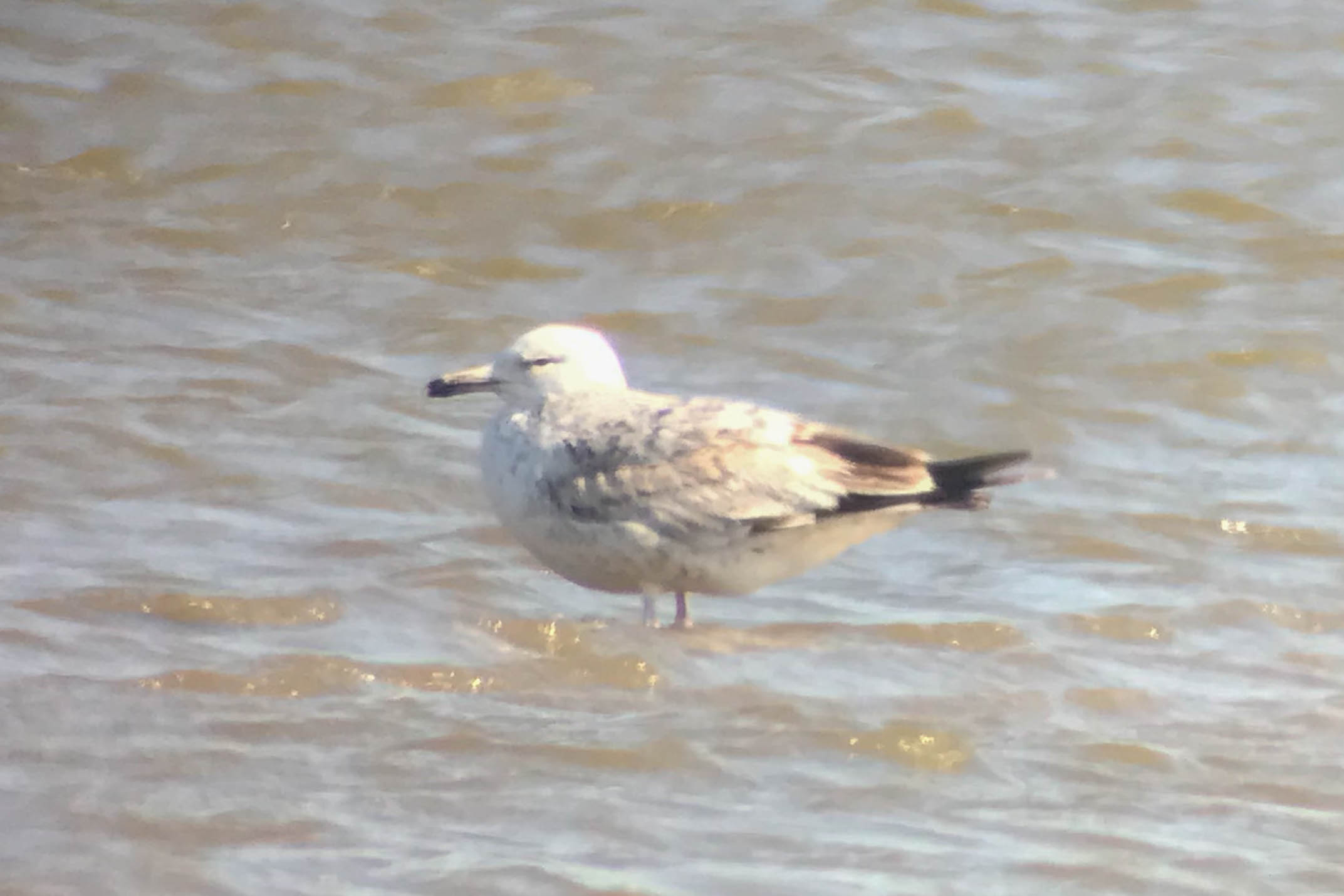
We still had time for one quick last stop so we made our way back to the car par and drove round to Kelling. It was quiet at first as we walked along the lane, just a couple of Chiffchaffs calling in the hedge. On the edge of the Kelling Estate, there were perhaps unsurprisingly lots of Pheasants and Red-legged Partridges. We stopped to admire several Brown Hares sunning themselves out in the fields too.
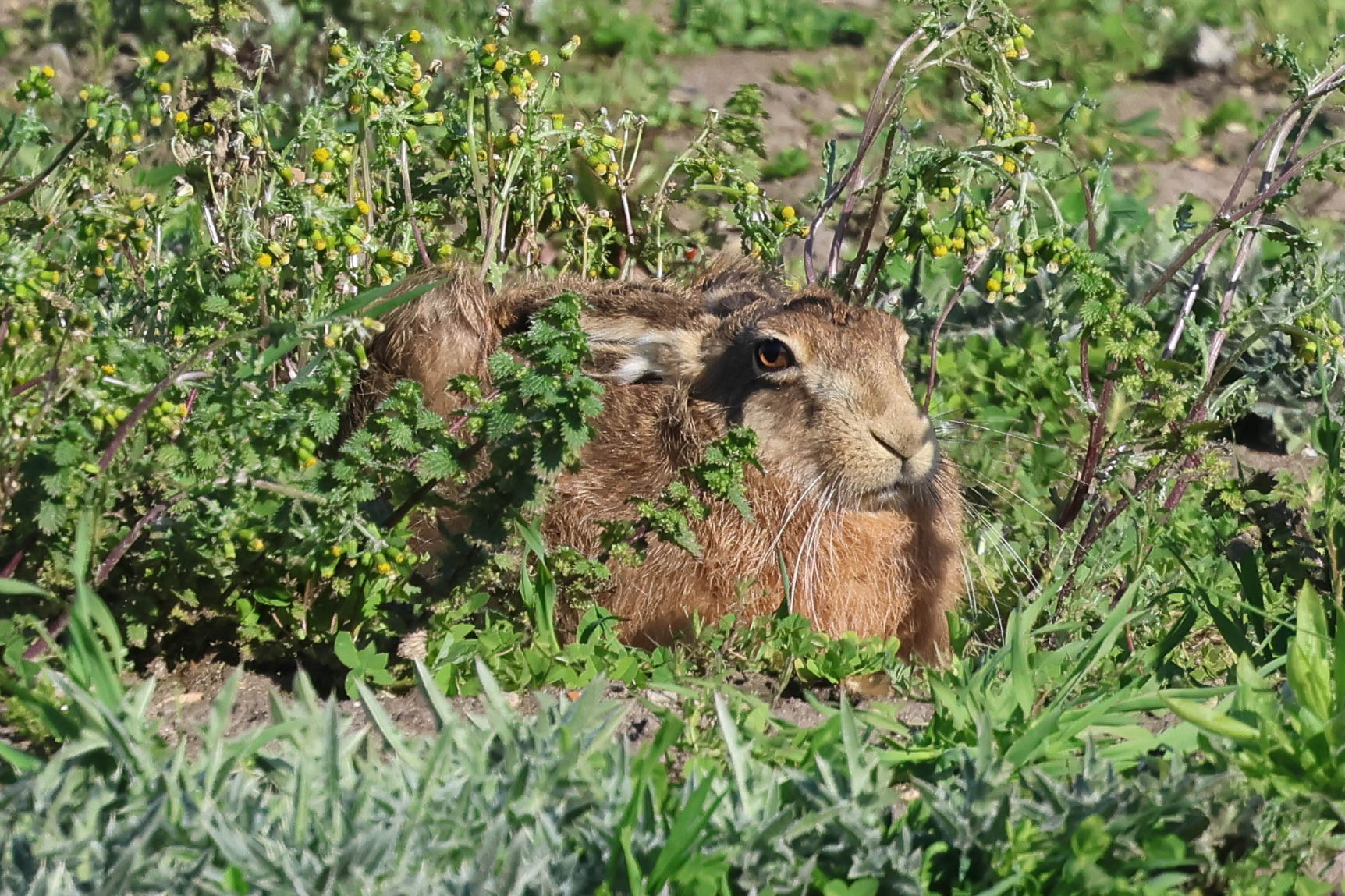
Down at the copse, the edge by the path was sheltered and in the afternoon sunshine. A Blackcap was singing ahead of us, and flew a little further down where it perched in the bushes preening and we could get it in the scope. A Long-tailed Tit flew in and landed above it. A Chiffchaff was flicking around in the hedge in the sun too and was chased by a second. A Holly Blue butterfly fluttered round over the ivy.
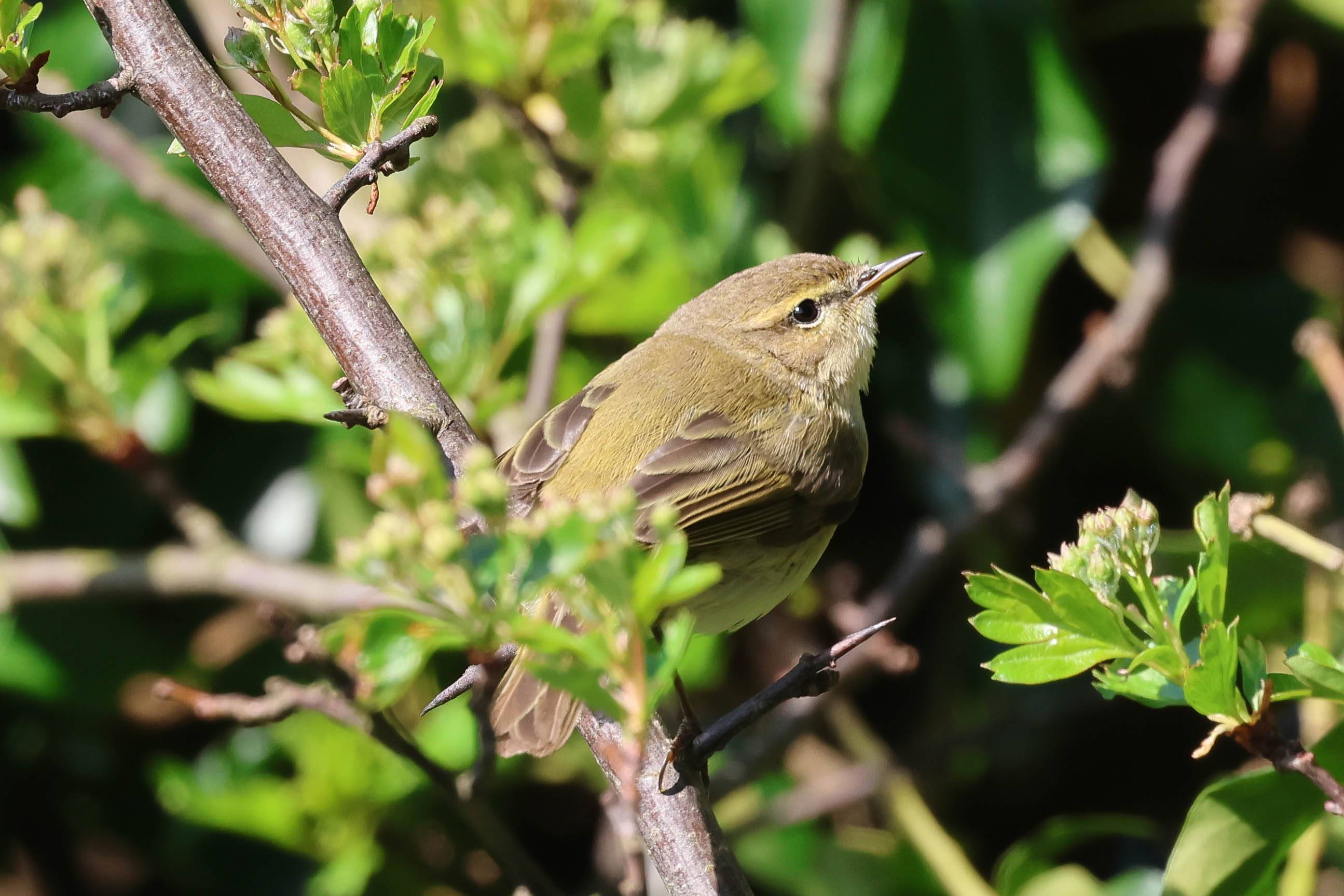
From the gate just beyond, we looked out across the grazing marsh. A pair of Egyptian Geese were dozing in the grass and another pair of Red-legged Partridge were on the edge of the rushes just beyond. There were several more Hares in the field behind. A single Swallow hawked back and forth overhead.
Down to the Water Meadow pool, there were a few ducks on the water and a single Little Grebe. One Sand Martin flew over, but there were not so many here today. Perhaps they were the birds we had seen earlier at Cley, which had moved along to feed there in the wind.
From the crosstrack, we stopped to admire a Green Sandpiper feeding on the mud in the freshly cleared beck channel. Another spring migrant stopping off on its way north. A Stonechat hopped up briefly on a fence post distantly on the edge of the field beyond.
Unfortunately we were out of time, and had to head back. It had been a successful and enjoyable first day, and we were looking forward to another day out tomorrow.
